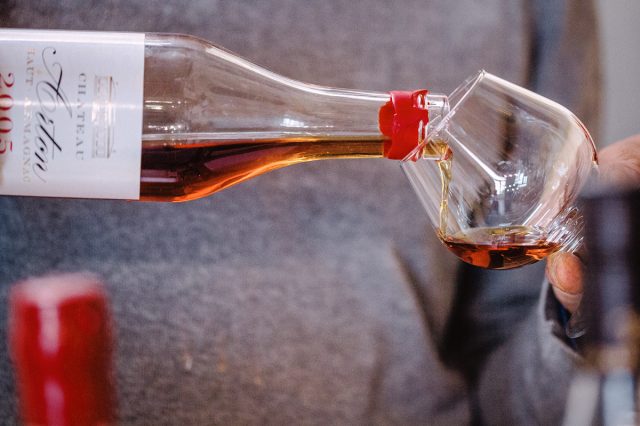How to taste our Armagnacs ?

We recommend opening the bottle of Château Arton 20 minutes before serving it to allow time for the aromas to develop and the flavors to express themselves and reveal themselves.
The glass is important. Balloon or tulip glasses are the most suitable because they concentrate the aromas. Liqueur glasses are also suitable. Serve the Armagnac without ice, at room temperature.
Admire the amber color of the Armagnac which can go from pale gold to deep copper depending on the age.
Breathe in its aromas. Do not plunge your nose into the glass! But keep your nose high, a few centimeters above the glass.
Then keep the Armagnac in your mouth. Take the time to awaken the memories. And discover… the fruity (quince, grape, plum), the floral (vine flower and lime), the woody (vanilla, spices and toasted) and the rancio (dried fruits, nuts, hazelnuts). The first tasting, unctuous, reveals the aromatic richness of Armagnac, its power. In the bottom of the glass is its quintessence, prunes, spices and chocolate, an aromatic palette that expresses all the complexity of Armagnac.
Generous, the Armagnac is shared. It is the conviviality dear to the Gascons! If it can be drunk as an aperitif, it is best enjoyed at the end of a meal. It can be appreciated with a coffee or a Cuban/Dominican cigar whose cocoa, honey and black pepper flavors enhance its aromas.
Gourmet pairings
Our Armagnacs exalt the richness of Gers gastronomy: foie gras, chicken in a pot, duck breast. They go particularly well with dark chocolate cake, almonds and dried fruits, walnut pie or orange macaroons.